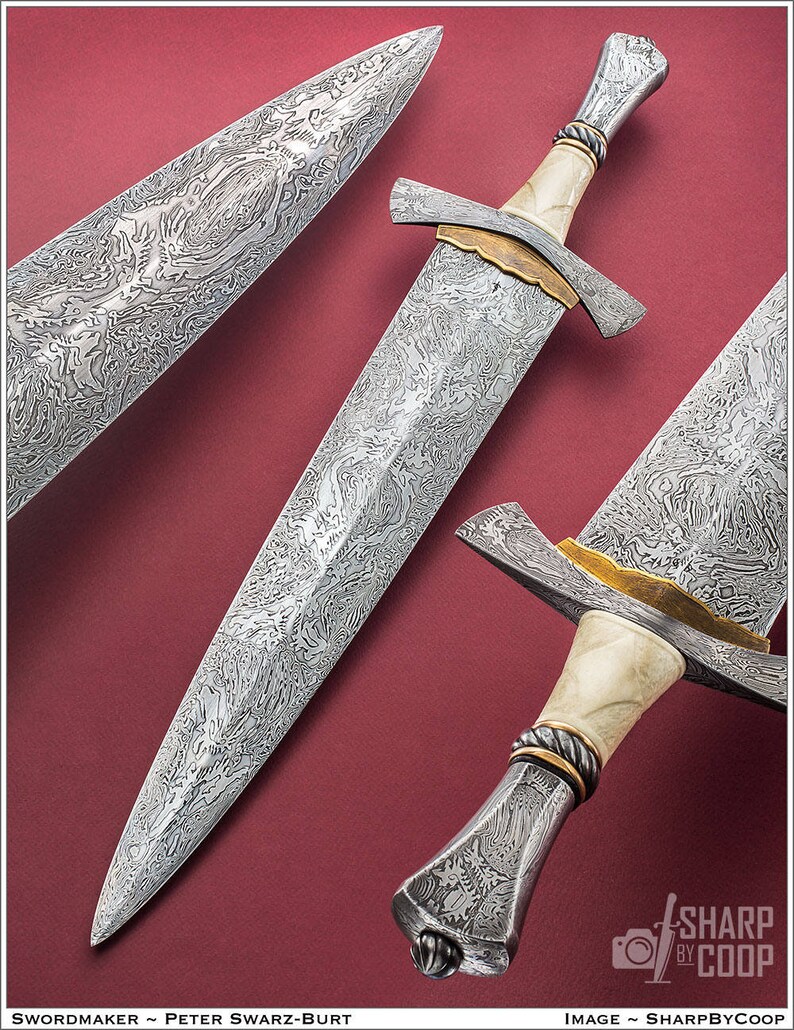

The differing elements of steel also have different purposes. The addition of manganese to VG10 produces a darker color steel, while the inclusion of nickel in VG2 provides a bright silver tone. VG10 contains roughly 1% carbon and molybdenum, 15% chromium, 1.5% cobalt, and less than 1% vanadium, manganese and phosphorus, while VG2 is comprised of roughly 1% carbon, 15% chromium, and less than 1% copper, molybdenum and nickel. Sharp uses 67 layers of VG10 and VG2 steel to reveal a feathered Damascus pattern. The creation of modern Damascus steel is still an art form. From selecting the proper steel with the proper alloys and carbon content to varied temperatures for forging, shaping and quenching the steel, the process to create the best knife steel is extensive and precise.įor example, F.N. It is known, now, that Damascus steel is not a pure metal, relying on a variety of impurities and an imbuement of high carbon percentages to provide the beauty, strength and durability that is paving the way for the modern Damascus steel revival. The plasticity of the heated metal and the durability of the cooled product allows this steel to be shaped into a wide variety of tools, from gears and auto parts to fashionable styled, high-end kitchen knives. While the notion of quenching the steel in blood in order to provide strength may seem unrealistic, some modern scientists believe the nitrogen in the blood may, in fact, have strengthened the alloy. It was believed forgers would thrust the heated blades into slaves to transfer their strength into the blade, or that the blades were “quenched” in dragon’s blood. Legend has it that the quenching process is where the blades derived their magical strength. Thankfully, the human race is nothing if not tenacious and nostalgic. Metallurgists, historians and collectors from around the world coupled with drastic advances in technology have been able to reverse engineer the general Damascus steel forging process, and of course, have added their own special touches along the way.Ī SeptemNew York Times article revealed that two Stanford University scientists researching metals with superplastic characteristics accidentally recovered the secret to creating Damascus steel. Their research showed that the steel used to create the ancient blades required a high carbon content and a relatively low temperature for the forging and hammering process, which then required a rapid rise in heat followed by a swift cooling.Īs an aside for those gory history buffs out there, the “quenching” or cooling process for ancient Damascus steel blades is fodder for tall tales. However, as borders altered, wars ravaged and wootz reserves ran dry, the world began to lose touch with the masters of this unparalleled steel. Sadly, by the mid 18th Century, the blades had disappeared as had the techniques for their creation. The Arabs successfully imported the wootz ingots for centuries. These wootz steel ingots contained a variety of “impurities” such as tungsten and vanadium that, when combined with the traditional Indian smelting process as well as the numerous rounds of layering used to prepare each blade, created the magnificent Damascus blades.

Traditional Damascus steel is identifiable by its various swirling patterns on the flat of the blade. The unique patterns are believed to be originally derived from blocks of Indian and Sri Lankan wootz steel. The ferocity of those Arab warriors with their unique blades gave rise to the legends which spread throughout the Middle East and Europe. Western Europe received its first real taste of Damascus steel during the Crusades of the 11 th Century when the Crusaders witnessed the famed blade’s unequivocal sharpness in action at the hands of the Arab warriors. Named for what is now the capital city of Syria, Damascus steel was originally an undocumented forging technique utilized by Near East and Middle Eastern sword makers. While some evidence may suggest Damascus steel dates back to 300 B.C., the first mentions of the famed steel date back to between 300 and 500 A.D.
#Damascus steel lost to time professional#
For centuries, this unique forging technique was feared lost to history as all known traditions of creating this superbly crafted, ornate steel disappeared.įortunately for professional and amateur metallurgists alike, modern technology and metallurgical science has advanced enough for scientists to discover modern ways to recreate the resilient and exquisitely intricate Damascus steel. The fabled Damascus steel, whose elusive forging process was guarded by a select few, has seen a modern-day resurgence.


 0 kommentar(er)
0 kommentar(er)
